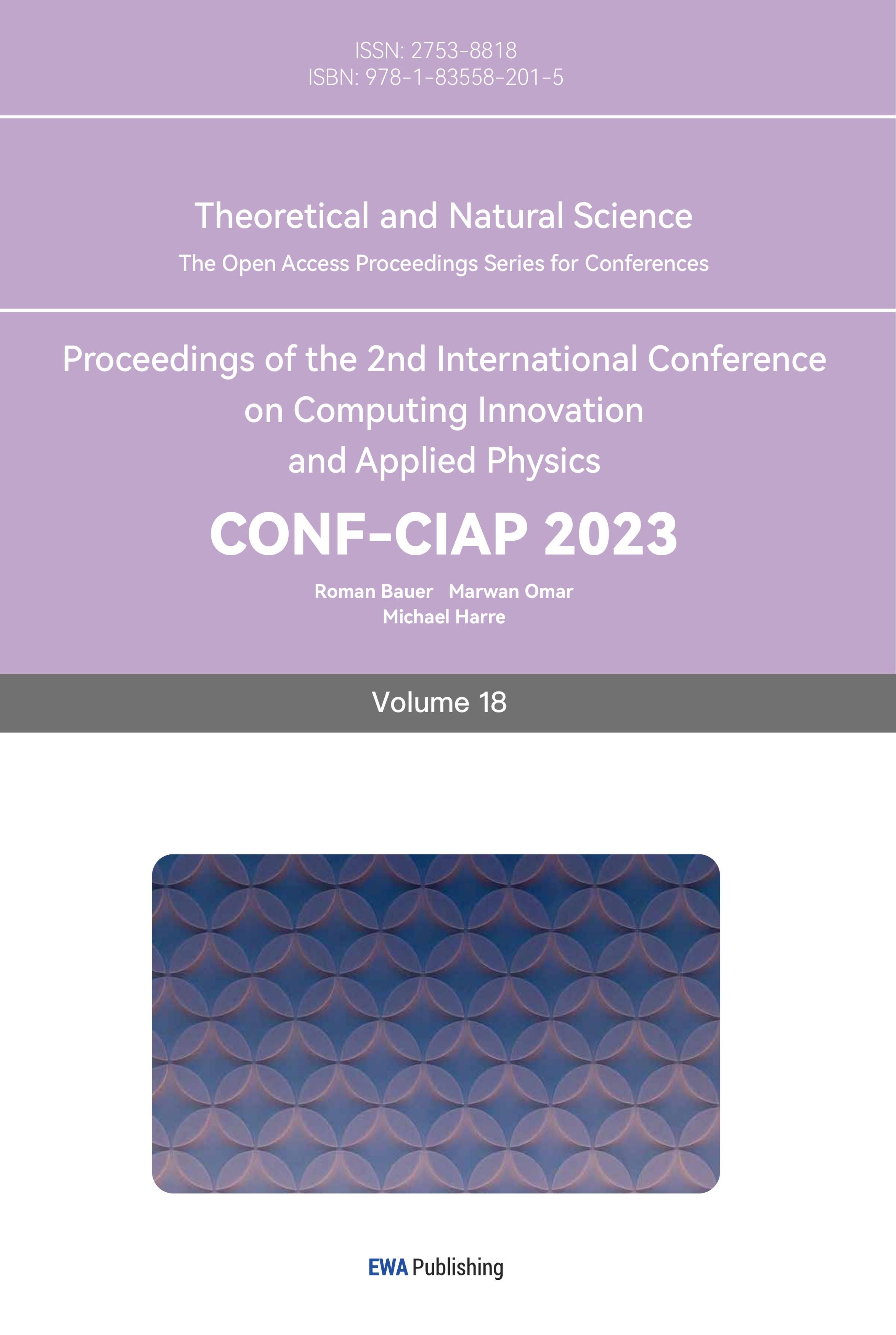References
[1]. Augenstein, M., Tenenbaum, A. (1977) Program efficiency and data structures. In: ACM SIGCSE Bulletin. New York. pp. 21-27.
[2]. MySQL. (2022) The physical structure of an InnoDB index. https://dev.mysql.com/doc/refman/8.0/en/innodb-physical-structure.html.
[3]. Baeldung. (2021) Real world examples of tree structures. https://www.baeldung.com/cs/tree-examples.
[4]. Hoare, C. A. R., Hayes, I. J., He, J., Morgan, C. C., Roscoe, A. W., Sanders, J. W., Sorensen, I. H., Spivey, J. M., Sufrin, B. A. (1987) Laws of programming. Commun. ACM, 30(8): 672-686.
[5]. Parlante, N. (2001) Binary Trees. http://cslibrary.stanford.edu/110/BinaryTrees.html.
[6]. Berman, A. M., Duvall, R. C. (1996) Thinking about binary trees in an object-oriented world. In: ACM SIGCSE ’96. New York. pp. 185-189.
[7]. Luedtke, D. (2018) A concurrency-safe, iterable binary search tree. https://danrl.com/btree/.
[8]. Ellis, C. (1980) Concurrent search and insertion in AVL trees. In: IEEE Transactions on Computers. pp. 811-817.
[9]. Bayer, R., McCreight, R. (1970) Organization And Maintenance of Large Ordered Indices. In: Mathematical and Information Sciences Report No. 20. pp. 107-141.
[10]. Comer, D. (1979) The Ubiquitous B-Tree. In: Computing Surveys, Vol 11, No. 2. pp. 121-137
[11]. Ellis, C.S. (1978) Concurrent search and insertion in 2–3 trees. In: Acta Information 14. pp. 63-86.
[12]. Lamport, L. (1977) Concurrent reading and writing. In: Communications of the Acm. pp. 806-811.
[13]. Bača, M., Kuroga, P. (2010) Analysis of B-tree data structure and its usage in computer forensics. In: Proceedings of the 21st Central European Conference on Information and Intelligent Systems. pp. 423-428.
[14]. SAMADI, B. (1976) B-trees in a system with multiple users. In: Information Processing Letters. pp. 107-112.
[15]. Hellerstein, J., Brewer, E. (2001) Concurrency control and recovery for search trees. https://dsf.berkeley.edu/jmh/cs262b/treeCCR.html
[16]. Lehman, P. L., Yao, B. (1981) Efficient locking for concurrent operations on B-trees. In: ACM Transactions on Database Systems. New York. pp. 650-670.
Cite this article
Du,X.;Liu,Y. (2023). Concurrency control in tree data structures. Theoretical and Natural Science,18,98-109.
Data availability
The datasets used and/or analyzed during the current study will be available from the authors upon reasonable request.
Disclaimer/Publisher's Note
The statements, opinions and data contained in all publications are solely those of the individual author(s) and contributor(s) and not of EWA Publishing and/or the editor(s). EWA Publishing and/or the editor(s) disclaim responsibility for any injury to people or property resulting from any ideas, methods, instructions or products referred to in the content.
About volume
Volume title: Proceedings of the 2nd International Conference on Computing Innovation and Applied Physics
© 2024 by the author(s). Licensee EWA Publishing, Oxford, UK. This article is an open access article distributed under the terms and
conditions of the Creative Commons Attribution (CC BY) license. Authors who
publish this series agree to the following terms:
1. Authors retain copyright and grant the series right of first publication with the work simultaneously licensed under a Creative Commons
Attribution License that allows others to share the work with an acknowledgment of the work's authorship and initial publication in this
series.
2. Authors are able to enter into separate, additional contractual arrangements for the non-exclusive distribution of the series's published
version of the work (e.g., post it to an institutional repository or publish it in a book), with an acknowledgment of its initial
publication in this series.
3. Authors are permitted and encouraged to post their work online (e.g., in institutional repositories or on their website) prior to and
during the submission process, as it can lead to productive exchanges, as well as earlier and greater citation of published work (See
Open access policy for details).
References
[1]. Augenstein, M., Tenenbaum, A. (1977) Program efficiency and data structures. In: ACM SIGCSE Bulletin. New York. pp. 21-27.
[2]. MySQL. (2022) The physical structure of an InnoDB index. https://dev.mysql.com/doc/refman/8.0/en/innodb-physical-structure.html.
[3]. Baeldung. (2021) Real world examples of tree structures. https://www.baeldung.com/cs/tree-examples.
[4]. Hoare, C. A. R., Hayes, I. J., He, J., Morgan, C. C., Roscoe, A. W., Sanders, J. W., Sorensen, I. H., Spivey, J. M., Sufrin, B. A. (1987) Laws of programming. Commun. ACM, 30(8): 672-686.
[5]. Parlante, N. (2001) Binary Trees. http://cslibrary.stanford.edu/110/BinaryTrees.html.
[6]. Berman, A. M., Duvall, R. C. (1996) Thinking about binary trees in an object-oriented world. In: ACM SIGCSE ’96. New York. pp. 185-189.
[7]. Luedtke, D. (2018) A concurrency-safe, iterable binary search tree. https://danrl.com/btree/.
[8]. Ellis, C. (1980) Concurrent search and insertion in AVL trees. In: IEEE Transactions on Computers. pp. 811-817.
[9]. Bayer, R., McCreight, R. (1970) Organization And Maintenance of Large Ordered Indices. In: Mathematical and Information Sciences Report No. 20. pp. 107-141.
[10]. Comer, D. (1979) The Ubiquitous B-Tree. In: Computing Surveys, Vol 11, No. 2. pp. 121-137
[11]. Ellis, C.S. (1978) Concurrent search and insertion in 2–3 trees. In: Acta Information 14. pp. 63-86.
[12]. Lamport, L. (1977) Concurrent reading and writing. In: Communications of the Acm. pp. 806-811.
[13]. Bača, M., Kuroga, P. (2010) Analysis of B-tree data structure and its usage in computer forensics. In: Proceedings of the 21st Central European Conference on Information and Intelligent Systems. pp. 423-428.
[14]. SAMADI, B. (1976) B-trees in a system with multiple users. In: Information Processing Letters. pp. 107-112.
[15]. Hellerstein, J., Brewer, E. (2001) Concurrency control and recovery for search trees. https://dsf.berkeley.edu/jmh/cs262b/treeCCR.html
[16]. Lehman, P. L., Yao, B. (1981) Efficient locking for concurrent operations on B-trees. In: ACM Transactions on Database Systems. New York. pp. 650-670.









